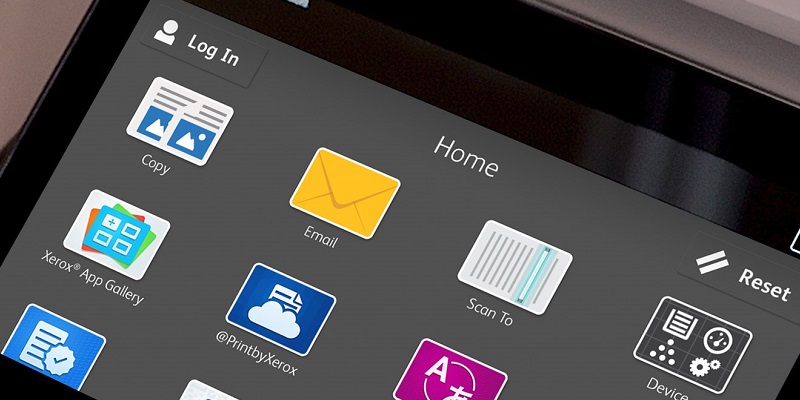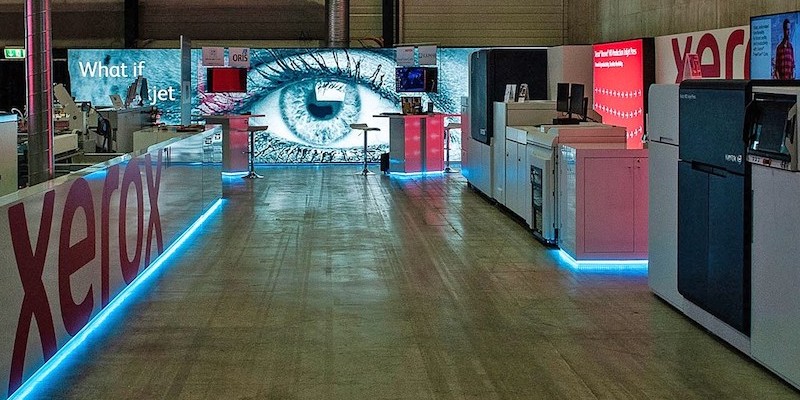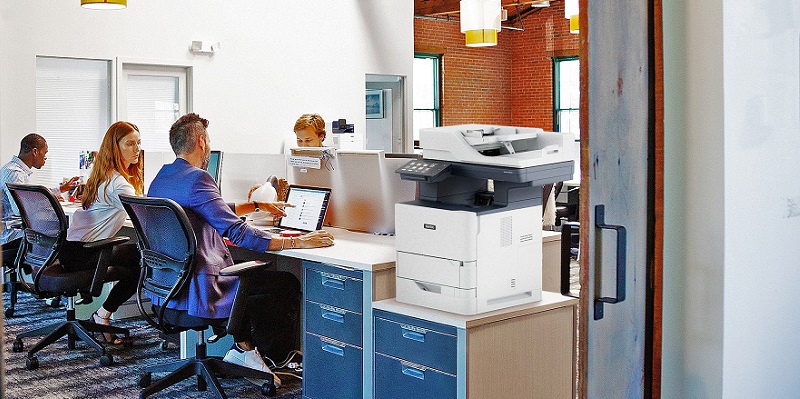
What is the Future of Cloud Print?
According to the latest Cloud Print Services 2022 Report from global market insight and research firm Quocirca, published in July 2002, most organisations will operate a fully or mostly cloud-based IT environment by 2025.
Businesses want to be resilient, save money, and support a hybrid workforce without sacrificing security. As a result, one-fifth expect to fully transition their IT environment to the cloud by 2025, while 41% expect to transition mostly. In comparison, 6 percent are fully in the cloud and 21 percent are mostly in the cloud today, implying that the overall balance between cloud and on-premise infrastructure will shift in favour of the cloud within the next three years.
Cloud print management has gained popularity at a jaw-dropping pace: 43 percent have already implemented a cloud print management platform, a significant increase from 29 percent in 2021. A further 37% intend to implement cloud print management, making it the preferred solution for eight out of ten IT decision-makers overall.
The study of firms also discovered:
Cloud services are the top investment priority for the coming year, according to 31% of respondents.
To support hybrid workers, 45 percent have implemented remote print job submission.
87 percent believe the cloud is significantly more, or slightly more, secure than an on-premise platform.
For 80 percent of respondents, cloud print deployment is part of their sustainability strategy.
Cloud availability is an important MPS supplier selection factor, with 38% saying it influences their choice of MPS provider.
According to 40%, transitioning print services to the cloud is a key driver for MPS adoption, according to 40%.
MPS maturity vs. cloud maturity
According to the study, organisations that use a fully outsourced Managed Print Service are less likely to have switched to a cloud-based print environment than those that use a hybrid approach. More than half (52%) of fully outsourced MPS customers continue to manage their print environment on-premise, compared to only 31% of those with a hybrid setup in which part of the print environment is managed in-house.
“There is a clear opportunity here for MPS providers to support their customers through the transition.”
However, traditional MPS providers may lack the necessary cloud expertise to capitalise on this opportunity. They will be at a disadvantage compared to competitors who are more cloud-ready unless they invest quickly in developing a cloud offering. Certainly, with 40% of respondents citing cloud migration as a top benefit of MPS, providers who are unable to meet this demand will suffer.
Cloud printing uptake
According to the findings, cloud adoption varies by geography and industry. The United States has the most mature cloud print adoption (56 percent). In the United Kingdom, 40% of respondents already use cloud print management, and another 28% intend to do so. Germany has the least maturity, with only slightly more than one-third (32%) of respondents already using cloud print management.
Cloud printing requires education
Investment and education are required to pursue the potential of cloud printing. Buyers must be confident that proposed solutions meet the hybrid workplace’s accessibility, security, and analytics requirements. Suppliers, including OEM vendors and channel businesses, must ensure that they address businesses’ multi-cloud needs, as many are still not fully cloud native. Integration with existing security systems and support for zero-trust configurations are also required. This may necessitate collaboration with specialised cloud providers, and businesses must be willing to develop a strong partner ecosystem in order to fully support evolving customer needs.
Digital transformation and cloud print
Employees have a lot more freedom these days when it comes to choosing a work location, but a distributed workforce brings with it a slew of new issues. It’s difficult, for example, to ensure print reliability and security as employees move from one location, device, and network to another. The implications for traditional print management processes and their place, cloud-based print management are varied: a cloud model enables organisations to track remote and hybrid workers wherever they go, ensuring the security of documents, data, and your network.
Cloud and print security
Print isn’t going away, and neither is hybrid work. According to the Quocirca Print Security Landscape, 2022 report, 64 percent of organisations believe printing will remain critical or very important in the next 12 months. However, with a distributed workforce, the basic task of printing becomes more difficult to execute and manage.
The first issue is locating the correct printer driver. Wherever you happen to be working, if it’s outside of your office how are you going to get your document to the printer? The workday is disrupted while these problems are resolved. However, the security risks associated with printing in a “work anywhere” world are even more daunting. More than half (53%) of organisations reported that the shift to remote work has made it significantly or somewhat more difficult to keep up with print security challenges.
Remote and hybrid workers are using more devices and networks that have not been set up or purchased by the organisation, which increases the attack surface and makes IT management more difficult. When confidential documents are printed on a public or home printer, they are more vulnerable to disclosure. In the last year, 68 percent of organisations have suffered data losses as a result of insecure printing practises. In the survey, vulnerabilities in home printers were cited as one of the top causes of data loss, which can result in financial penalties, business disruption, and customer loss.
7 Benefits of Cloud Print Management
Managed print services are a modern solution for many businesses to manage their perpetual copy and print issues. If you’re tired of running out of paper and toner and not having what you need when you need it, the Advanced UK Managed Print Service can help. Cloud print services are one of the most important tools that help us to keep your print infrastructure up and running. We can meet your needs as you transition to the cloud, unlike traditional on-site print management, because the latter can be costly and difficult to manage. Using the cloud allows you to increase efficiency, reduce costs, and allow our team to manage your print program.
Cloud printing enables a wide range of digital devices, including smartphones, tablets, laptops, and workstations, to connect to printers. Traditional printing is reliant on cables and is frequently complicated by connectivity issues, compatibility issues, and software driver issues. You no longer need printer drivers when using cloud print services. Instead, the printer can easily connect to the device and obtain all of the necessary information from the cloud. This is much more dependable and seamless, and it also has a slew of other advantages.
1. Cost-cutting measures
1. Cost-cutting measures
Cloud printing is significantly less expensive than most on-site print management solutions. Your operating costs will be lower, and your print servers will be hosted in the cloud rather than on-premises. This reduces the energy costs associated with hosting and having servers on-site. Cloud printing eliminates the need for your company to purchase, install, and maintain printer hardware and software, not to mention the administration of printer drivers. If you’re not sure how much money you could save by working with us, contact us today to find out.
2. Lower carbon footprint
2. Lower carbon footprint
Every company wants to be greener and more energy efficient, and cloud print services are one way to do so. Printing from the cloud reduces waste and may even reduce carbon emissions. Managed print services are another way to ensure that toner and paper products are used responsibly.
3. BYOD and print
3. BYOD and print
When employees are increasingly bringing their own devices to the office, they want to use their own smartphone or tablet because they don’t see why mobile printing should be an obstacle. Of course, the security considerations remain, so when you invest in cloud print services, your employees will be able to print from any internet-connected device and your network remains secure. They won’t have to worry about drivers or compatibility, reducing the burden on your IT staff and help desk.
4. Easy software updates
4. Easy software updates
A key feature of a quality print management solution is how you manage updating software on a large network. This can be time-consuming, and print drivers have long been the bane of IT departments. Using cloud print services allows you to take advantage of automatic, real-time software updates even when you have some users with Mac and other users with Microsoft Windows computers. We will always keep your print network up-to-date and secure, ensuring your users have access to the functionality they need while your administrators have the analytics related to every MFD or other networked printer. You won’t have to worry about updating software on your employees’ devices because they don’t need any special software to connect.
5. Ease of use
5. Ease of use
Any company that relies on multiple printers and devices and requires a large volume of printed material every month understands how difficult and time-consuming it can be to keep everything up to date. A cloud-based printing solution is extremely simple to set up and maintain, especially with automated driver management. Contact Advanced UK for a consultation. We have worked with businesses of all sizes and industries to make running a business easier than ever before.
6. Serverless!
6. Serverless!
The cost of establishing and maintaining cloud printing is significantly lower than the cost of establishing and maintaining extensive IT infrastructure. It is less stressful and easier to outsource your printing to cloud-printing services rather than using extensive resources to do it yourself. Advanced UK specialises in simplifying IT for businesses of all sizes and industries, and we are always available to help you in any way we can.
7. Print rules management
7. Print rules management
This can help you tailor future machine investments and even your guidelines for what should and should not be printed. When you work with an experienced company such as Advanced UK to design and install your print services, you’ll discover enhanced security precisely because you are printing in the cloud. Cloud print services are one way to obtain more useful information while maintaining control over the print services provided to your employees.
Best for Cloud Print
Over the past year, adoption of the cloud has grown incredibly quickly. Businesses’ ability to adapt to remote working and become flexible and resilient in a highly unpredictable time has proven to depend on cloud infrastructure. Due to the expanding IoT landscape and the development of solutions by hyperscale providers like AWS, Microsoft, and Google, edge computing adoption is increasing as businesses speed up their migration to the cloud.
Cloud printing platforms can be a useful tool for IT teams managing printing in a hybrid workplace because they can track, monitor, and secure print in both the office and home settings. Businesses must implement reliable cloud print platforms that support the zero trust environments that more organisations are starting to use to reduce their vulnerability to cyberattacks and minimise the malicious or unintentional loss of information by their employees. Untrusted devices, such as home printers, pose a threat to enterprise security.
Consider a fully-outsourced MPS
In such a dynamic and varied market. success depends on choosing the appropriate cloud print service provider and platform. The market is intricate and constantly changing, and there are numerous available strategies. While independent software vendors (ISVs) are a good option for businesses operating in a mixed fleet environment or where businesses are not using a fully outsourced MPS, some print manufacturers offer a fully managed cloud print service.
Buyers are advised by Quocirca to consider how cloud print service providers can support their cloud journey. Organizations will be able to change as their on-premises and cloud needs change with the help of a portfolio that offers private, public, and hybrid models. Choosing a provider that can keep up with the organization’s pace will be essential for those already on their cloud journey.
Hybrid or serverless?
A serverless model may be a better way to reduce print server costs and overheads in smaller organisations with few workstations or printers, or at the very least, to establish a more stable cost base for ongoing print-related issues. Businesses looking to reduce their IT administrative workload, control print costs, and consolidate servers may find it appealing. A hybrid solution implemented under a single management platform allows for ease of use for administrators while still allowing for consolidation and cost savings, making it the better option for organisations that are not looking to eliminate their print servers or who may have security concerns.
Multi-tenant platforms?
Single tenant hosted solutions are more expensive, offer better overall control, but because they require manual maintenance and update procedures, they can also pose a risk to availability. Multi-tenant solutions typically have extensive configuration options and strong security that is overseen by the service provider. Because the platform is constantly changing to support many different tenants, multi-tenancy also helps to control costs.
All users of the cloud platform should receive regular feature releases and updates, as well as defined uptime SLAs. To enable user education, customers must be kept informed about changes that will be made, and when requirements for their VPN change. Even though some cloud printing services are hosted on cloud servers, access is still restricted because a VPN tunnel is needed to connect to the network. Users incur significant additional costs when using a VPN service to connect to the print platform in terms of connection speed, VPN cost, installation, and management on desktops and mobile devices. Additionally, since the VPN grants access to the entire on-premise network in the event that it is compromised in any way, it may result in an unnecessary security weakness.
Security of documents.
Instead of sending all the information and metadata related to print jobs to the cloud to be spooled, the print platform should support either compression of print jobs or local handling of at least some portion of the job. Print jobs can be kept on the local network behind the firewall using a cloud-based platform. Any data sent between the client and the cloud should ideally be encrypted to prevent man-in-the-middle attacks from intercepting the stream.
Multi-factor authentication (MFA)
Multi-factor authentication (MFA) and identity and access management (IAM) (MFA). Consider a cloud printing platform that enables users to authenticate at any device using smart card release, other NFC or Bluetooth technologies, biometrics, or by printing a PIN. Enterprises are considering zero trust security models, and identity management is becoming a much bigger focus. Be on the lookout for integration with IAM platforms like Ping Identity and Okta. Multi-factor authentication (MFA) systems should be implemented at the very least, ideally using apps that are based on mobile devices. Look for a cloud printing solution that integrates with Microsoft’s Universal Print if you use Azure Active Directory.
Support for native drivers.
While a universal print driver (UPD) can make things simpler, buyers should think about options that support native drivers so they can take advantage of all the MFP’s features. If this isn’t possible, search for UPDs that provide the best support for the features that your users use the most, such as collation, best-fit, colour/black and white printing, and so on.
Print and document capture
Beyond cloud printing management and support, think about whether the platform enables document capture procedures. Numerous cloud platforms that support digital workflow processes, as well as monitor and track scanning usage and activity, are tightly integrated with MFP embedded platforms.
Analytics and reporting
Traditional print management solutions provide in-depth reporting on printer usage, device performance, consumables use (toner, paper), and service data. Look for integration with analytics solutions as some cloud printing platforms (especially those based on serverless/direct IP printing) do not offer robust reporting capabilities. Edge appliances can also be used to manage home printing reporting; some cloud print vendors offer these in place of installing data collection agents on PCs. A cloud printing platform ultimately enables an organisation to future-proof its business through flexibility and scalability and offers a multi-layered security approach to protect the hybrid work environment from potential print vulnerabilities.
Related Articles

Why Cloud Print Management?
The benefits of choosing cloud print services for your business.

Hiretest UK
Advanced UK’s Cloud solution helps Hiretest streamline their business for improved efficiencies and collaborative working.

Quocirca Names Xerox a Leader in Global Print Security
Quocirca confirms Xerox’s leading position in the print security market again in its 2023 report.

Xerox ConnectKey
From SME to PLC, Xerox ConnectKey defines the new power of digital transformation for everyone.

Quocirca names Xerox Cloud Print Security Leader
Quocirca confirmes Xerox’s leading position in the cloud print market in its 2023 report.

UK Supreme Court
Advanced UK is a strategic solutions partners for print hardware, software and managed print services.





